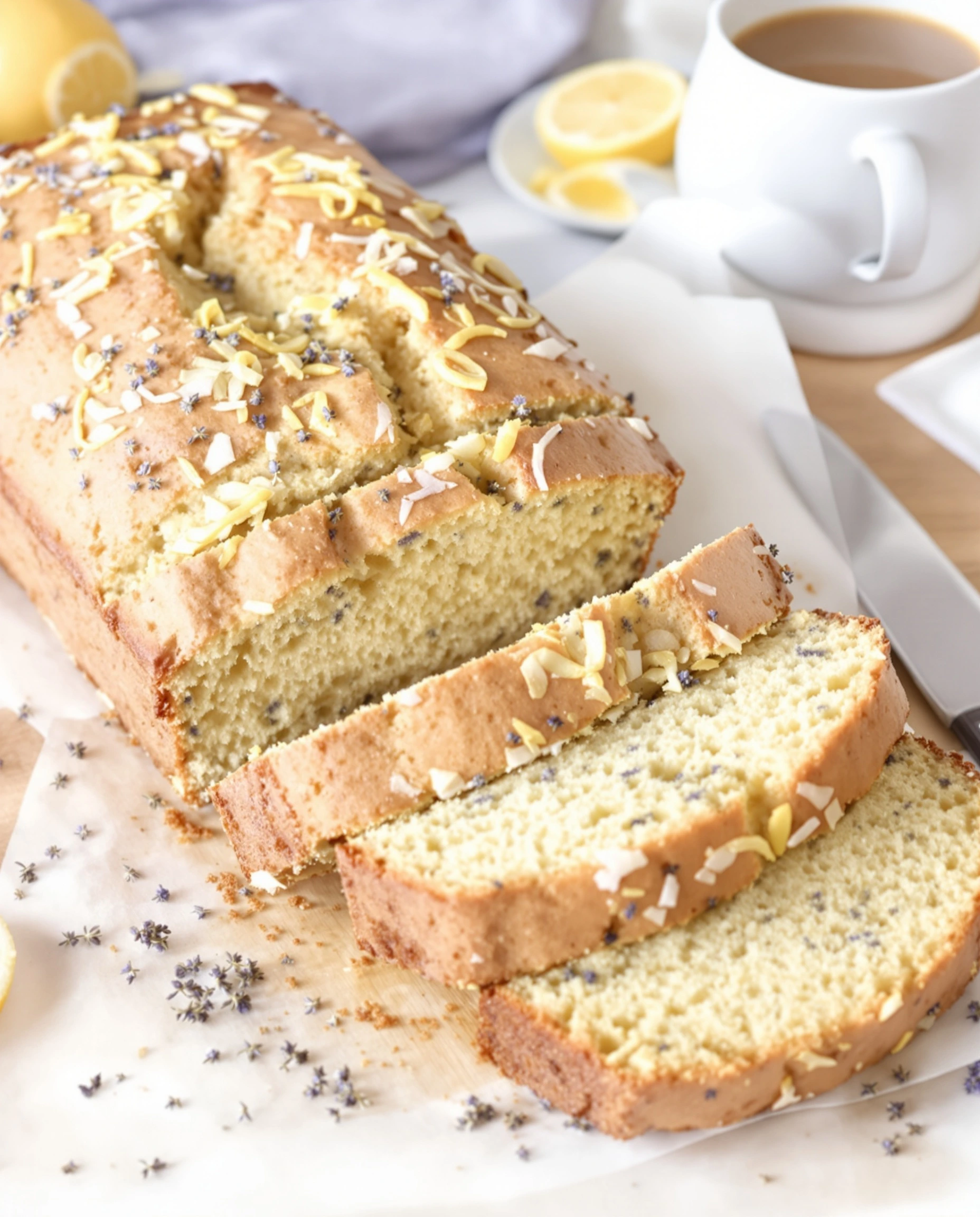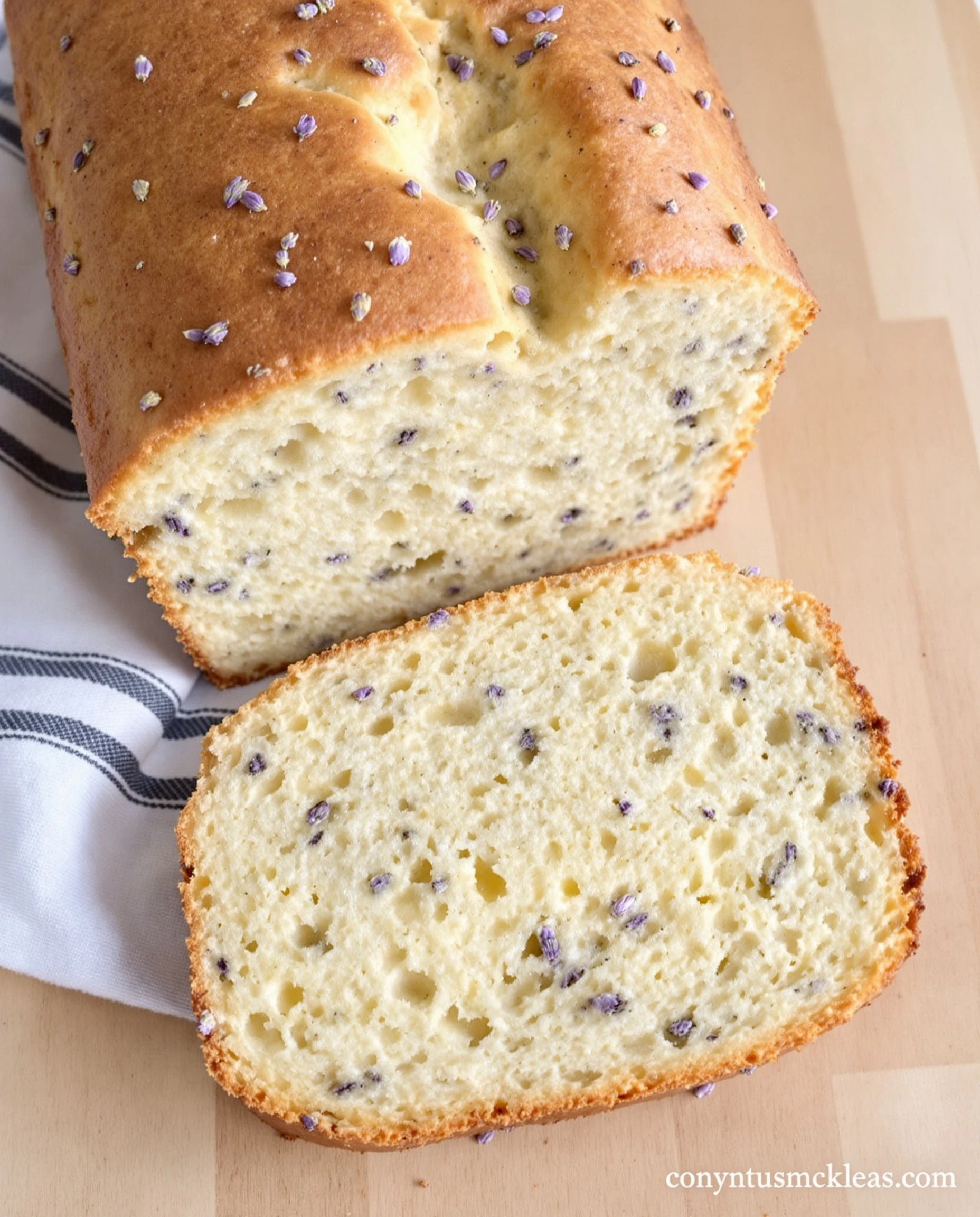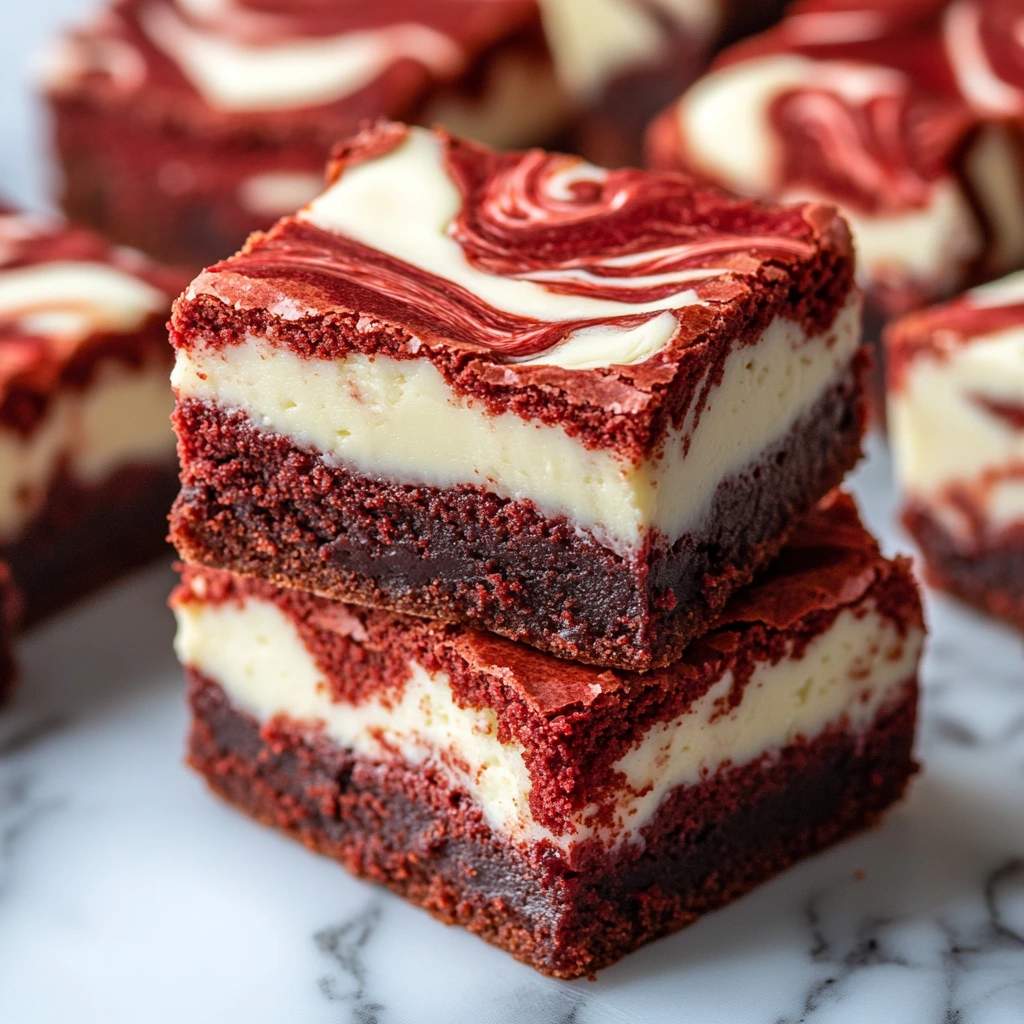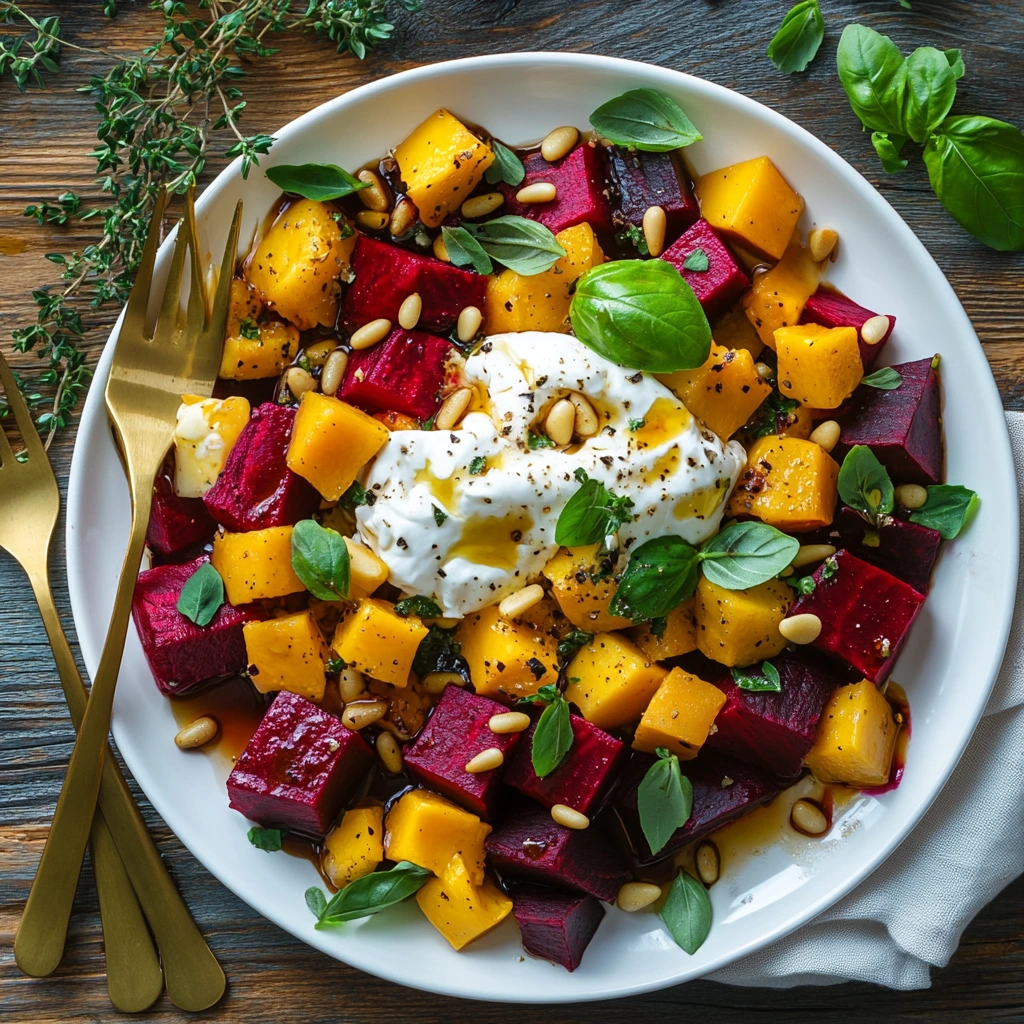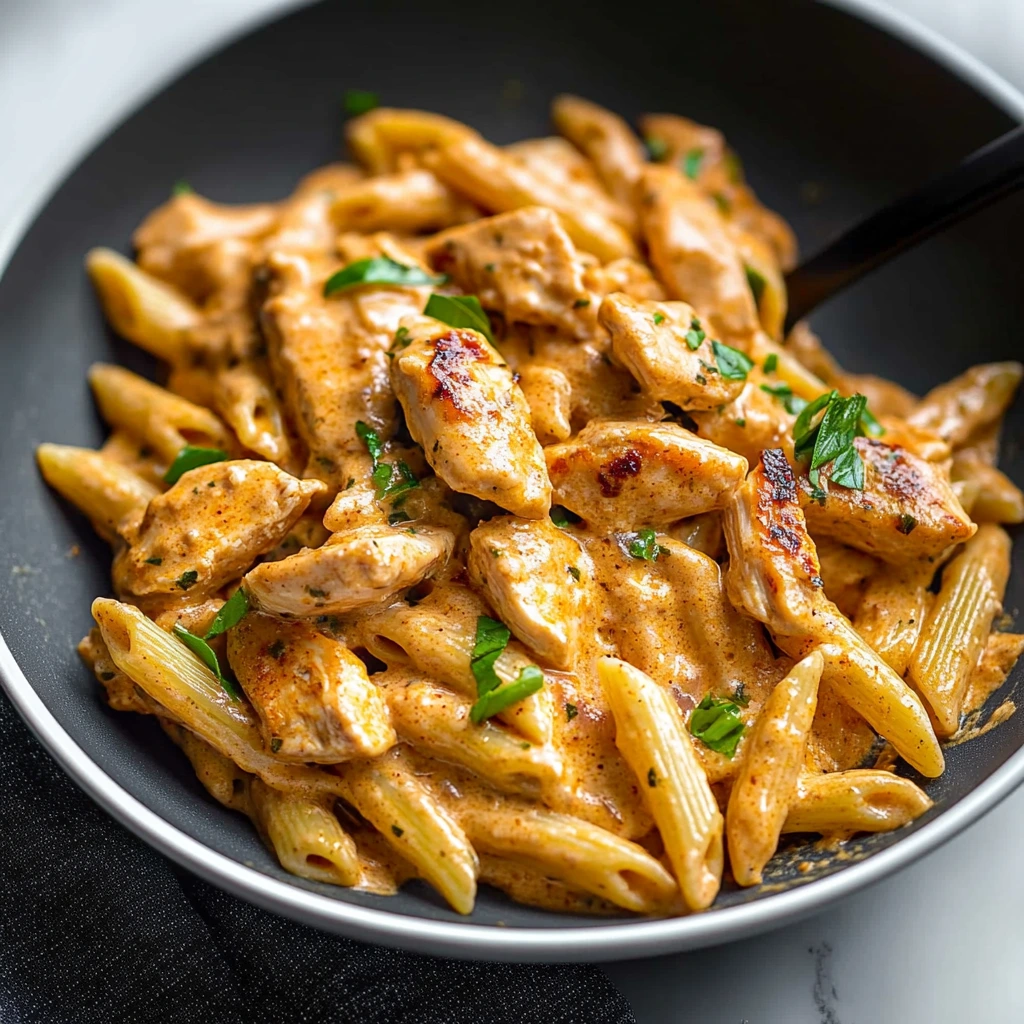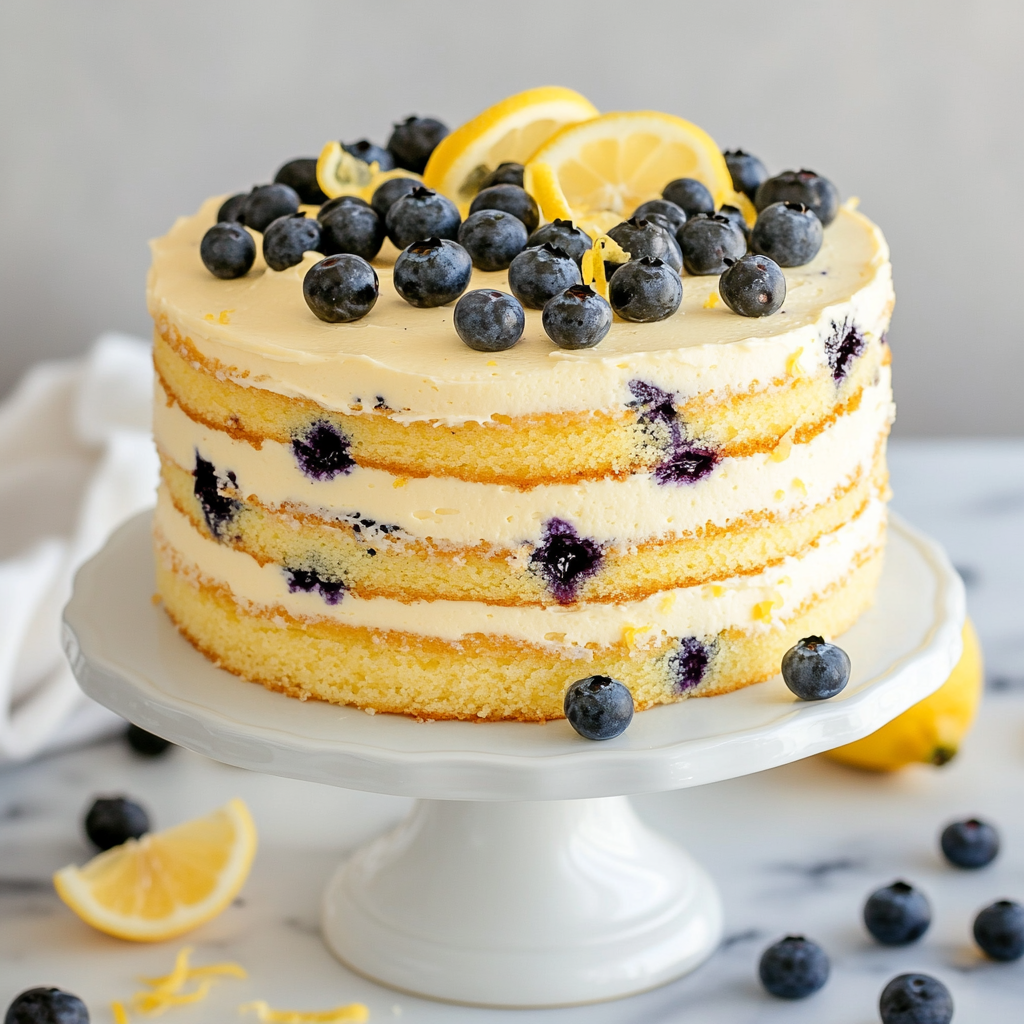Introduction and Beginning of the Recipe
There’s something so timeless about the pairing of lavender and lemon. Bright, zesty lemon combined with the subtle floral notes of lavender makes for a flavor combination that feels both elegant and comforting at the same time. And when you bring those flavors into a soft, moist loaf of bread? You’ve got yourself a quick bread recipe that’s just as perfect for an afternoon coffee break as it is for brunch with friends.
This Lavender Lemon Bread is one of those recipes you’ll want to keep on repeat. Not only does it taste incredible, but it’s also easy enough to whip up on even the busiest days. You’ll have it in the oven in under 20 minutes, which makes it a no-fuss recipe that still feels like something special.
One of the best parts? The aroma. While the bread is baking, your kitchen will fill with the scent of lemon and lavender. It’s the kind of smell that makes you slow down, take a deep breath, and maybe even look forward to cleaning up the dishes because the air around you feels like a spa day in the form of home baking.
Before we dive into the step-by-step process, let’s quickly go over the ingredient list. You’ll notice that most of the ingredients are pantry staples—flour, sugar, baking powder, milk, and an egg. The standouts are, of course, the fresh lemon and the lavender. If you’re new to baking with lavender, don’t worry! Culinary lavender is widely available in health food stores and online, and it’s a simple way to add a unique twist to recipes.
Ingredients You’ll Need
For the bread:
-
2 cups all-purpose flour
-
1 cup sugar
-
2 teaspoons baking powder
-
½ teaspoon salt
-
1 egg, lightly beaten
-
1 cup milk or half & half
-
¼ cup olive oil
-
Juice and peel of 2 lemons (save 2 tablespoons juice and 1 tablespoon peel for the icing)
-
2 teaspoons dried lavender (or 2 tablespoons fresh lavender, finely chopped)
For the glaze:
-
2 tablespoons sugar
-
2 tablespoons lemon juice
-
1 tablespoon butter
Step 1: Prepare Your Pan and Oven
Preheat your oven to 350°F. Lightly grease a standard loaf pan and set it aside. This bread works beautifully in one large loaf, but you can also divide the batter into mini loaf pans if you’d like to make giftable portions.
Step 2: Mix the Dry Ingredients
In a large bowl, whisk together the flour, sugar, baking powder, and salt. This step ensures that the baking powder is evenly distributed, so you get an even rise throughout the loaf.
Step 3: Combine the Wet Ingredients
In another bowl, mix together the egg, milk, olive oil, lemon juice, lemon peel, and lavender. This is where the magic begins—the mixture will already smell heavenly from the citrus and lavender combination.
Step 4: Bring It All Together
Pour the wet ingredients into the dry ingredients. Stir gently until the batter is just moistened. Don’t overmix—this is key with quick breads! The batter should look a little lumpy, and that’s exactly what you want. Overmixing leads to a tougher loaf, and we’re going for soft and tender here.
At this point, your batter is ready to be transferred to the loaf pan. Smooth it out just enough so it bakes evenly, and you’re all set for the oven.
Recipe Continuation and Helpful Tips
Step 5: Bake the Bread
Place the loaf pan in the preheated oven and bake for about 50 minutes, or until a toothpick inserted in the center comes out clean. The top should have a lovely golden color and a slight crack running down the middle—that’s a good sign you’ve nailed the texture.
If you’re making mini loaves, start checking them around the 40-minute mark, as they’ll bake a bit faster.
Step 6: Cool Before Glazing
Once baked, remove the loaf from the oven and let it cool in the pan for about 10 minutes. This helps the bread firm up, making it easier to transfer to a cooling rack without breaking.
While it’s tempting to glaze it right away, allowing the bread to cool at least partially will give you a prettier finish and help the glaze soak into the loaf in just the right way. That said, if you’re pressed for time, glazing while it’s still warm will still taste fantastic—it just won’t look quite as polished.
Step 7: Make the Lemon Glaze
In a small saucepan, melt the butter with the sugar and lemon juice. Stir until well combined and smooth. This glaze is what takes the bread from delicious to irresistible. It adds a sweet, tangy finish that perfectly complements the subtle floral notes of the lavender.
Using a toothpick, poke a few holes in the top of your cooled (or slightly warm) loaf. Slowly drizzle the glaze over the bread, letting it seep into the holes. This step ensures every bite is full of bright lemon flavor.
Helpful Baking Tips
-
Use culinary lavender only. Not all lavender is grown for cooking, and some can taste bitter or soapy. Culinary lavender is specially processed to be safe and flavorful for recipes.
-
Don’t skip the glaze. It may feel optional, but the glaze ties everything together. Without it, the bread is good. With it, the bread is incredible.
-
Consider citrus variations. If you don’t have lemons, you can substitute lime or orange. Oranges will give you a sweeter flavor, while lime provides a tang that’s similar to lemon.
-
Turn it into muffins. Divide the batter into a muffin tin and bake for 18–22 minutes. Perfect for a portable treat!
-
Freeze for later. This bread freezes beautifully. Wrap cooled loaves in plastic wrap, then place in a freezer bag. Store for up to 3 months.
Serving Suggestions
Lavender Lemon Bread pairs perfectly with a hot cup of tea or coffee. It also works well as part of a brunch spread alongside fruit, yogurt, or eggs. For a dessert-style twist, you can serve slices with a dollop of whipped cream or even a scoop of vanilla ice cream.
FAQ Section and Conclusion
Frequently Asked Questions
1. Can I use fresh lavender instead of dried?
Yes! Use about double the amount of fresh lavender since dried is more concentrated. Be sure to chop it finely so the flavor distributes evenly.
2. My lavender all floated to the top of the loaf. What went wrong?
This can happen if the buds are too light. Chopping them finely and mixing them well with the wet ingredients helps keep them distributed throughout the batter.
3. Can I make this bread gluten-free?
Absolutely. Substitute your favorite 1:1 gluten-free flour blend. Just make sure it’s one designed for baking to achieve the best texture.
4. How do I store leftovers?
Store the bread in an airtight container or a freezer bag. It will keep in the fridge for up to one week or in the freezer for up to three months.
5. Can I substitute olive oil with something else?
Yes, vegetable oil or melted butter will work. Some bakers even swap in unsweetened applesauce for a lighter version.
6. What if I don’t like lavender?
No problem! You can simply omit it and make a classic lemon quick bread. It will still taste amazing.
7. Do I have to use both zest and juice?
For the best flavor, yes. The zest provides concentrated lemon oils, while the juice gives that tangy acidity. Together, they balance each other beautifully.
Conclusion
Lavender Lemon Bread is one of those recipes that strikes the perfect balance between easy and impressive. With just a handful of ingredients and under 20 minutes of prep time, you get a loaf that’s bursting with fresh lemon flavor, enhanced by the subtle floral notes of lavender.
Whether you’re baking it for a quiet coffee break, gifting it to a neighbor, or serving it at a weekend brunch, this bread is sure to bring compliments (and requests for the recipe!). And don’t be surprised if your kitchen becomes everyone’s favorite place while it bakes—the aroma alone is reason enough to make it.
So next time you’re craving something a little special but still simple, give this Lavender Lemon Bread a try. It’s fresh, fragrant, and an absolute delight in every slice.
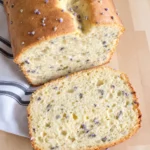
Lavender Lemon Bread – A Delightful and Easy Quick Bread Recipe
Description
A light, fragrant quick bread with bright lemon flavor and a subtle hint of lavender. Perfect with coffee, tea, or as a sweet homemade gift. Ready for the oven in under 20 minutes!
Ingredients
Bread:
-
2 cups all-purpose flour
-
1 cup sugar
-
2 tsp baking powder
-
½ tsp salt
-
1 egg, lightly beaten
-
1 cup milk or half & half
-
¼ cup olive oil
-
Juice + zest of 2 lemons (reserve 2 Tbsp juice + 1 Tbsp zest for glaze)
-
2 tsp dried lavender or 2 Tbsp fresh, finely chopped
Glaze:
-
2 Tbsp sugar
-
2 Tbsp lemon juice
-
1 Tbsp butter
Instructions
-
Preheat oven to 350°F. Grease a loaf pan.
-
In a bowl, whisk flour, sugar, baking powder, and salt.
-
In another bowl, combine egg, milk, oil, lemon juice/zest, and lavender.
-
Stir wet ingredients into dry until just moistened (batter will be lumpy).
-
Pour into pan and bake 50 minutes, or until a toothpick comes out clean.
-
Cool 10 minutes before glazing.
For Glaze:
Melt butter with sugar and lemon juice. Poke holes in loaf, then drizzle glaze over the top.
Notes
Use culinary lavender for best flavor.
For mini loaves, bake about 40 minutes.
Can be made into muffins (18–22 minutes bake time).
Store in fridge up to 1 week or freeze up to 3 months.
Swap lime or orange for lemon if desired.


